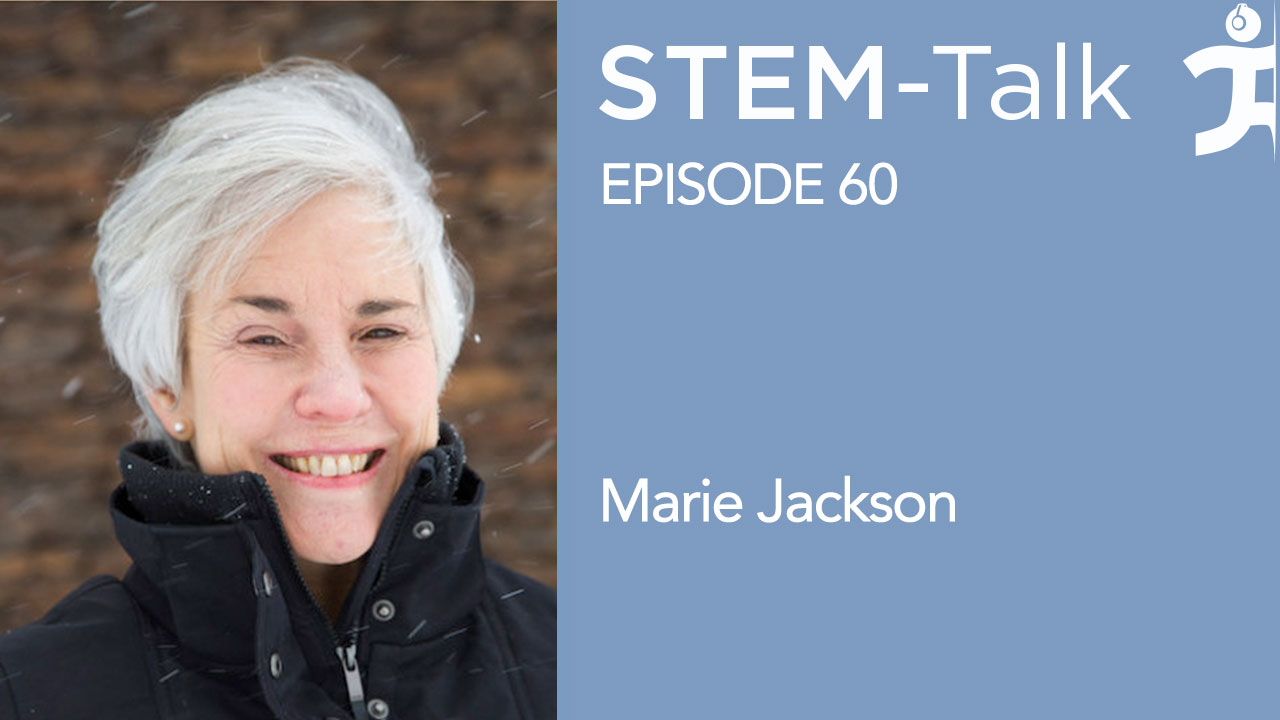STEM-Talk
Episode 60: Marie Jackson talks about the amazing endurance of Roman concrete
// Mar 27, 2018

Why is it that modern marine concrete structures crumble and corrode within decades, but 2,000-year-old Roman piers and breakwaters endure to this day?
Episode 60 of STEM-Talk features Dr. Marie Jackson, a scientist who has spent the past two decades figuring out the answer to that and other questions about the durability of ancient Roman mortars and concretes.
Marie is a research associate professor in the department of geology and geophysics at the University of Utah. She is known for her investigations in pyroclastic volcanism, mineralogy, materials science, and archaeological science that are breaking new ground in understanding the durability and specialty properties in ancient Roman mortars and concretes.
She is particularly focused on deciphering Roman methods and materials in the hope of producing innovative, environmentally friendly cementitious masonry products and nuclear waste storage materials that would benefit the modern world. She was the lead principal investigator of a drilling project in the summer of 2017 on the Surtsey Volcano, which is on a small isolated island off the coast of Iceland. The volcano is growing the same mineral cements as Roman marine cement and the drilling project is helping provide extraordinary insights into the materials and processes the Romans used.
She is particularly focused on deciphering Roman methods and materials in the hope of producing innovative, environmentally friendly cementitious masonry products and nuclear waste storage materials that would benefit the modern world. She was the lead principle investigator of a drilling project in the summer of 2017 on the Surtsey Volcano, which is on a small isolated island off the coast of Iceland. The volcano is growing the same mineral cements as Roman marine cement and the drilling project is helping provide extraordinary insights into the materials and processes the Romans used.
After receiving her bachelor of science in earth sciences from the University of California Santa Cruz, Marie traveled overseas and received a doctorate from the Universite de Nantes in France. She returned stateside and received a doctor of philosophy from John Hopkins University as well as a Ph.D. in earth and planetary sciences.
Marie then went to work as a research geoscientist for the U.S. Geological Survey. After taking time off to raise a family, Marie joined the department of civil and environmental engineering at the University of California, Berkeley, as a project scientist. She stepped into her current position at the University of Utah in 2016.
Links:
Mechanical resilience and cementitious processes in Imperial Roman architectural mortar:
Marie Jackson ResearchGate profile:
https://www.researchgate.net/profile/Marie_Jackson
Surtsey blogspace:
https://surtsey50years.utah.edu
Show notes:
4:06: Dawn begins interview by mentioning Marie’s love of the outdoors as a child and asks her to talk about those days.
4:38: Dawn asks if Marie’s father, who was a geologist, contributed to her love of the outdoors.
5:11: Dawn asks what topics Marie was interested in while in high school.
5:44: Dawn mentions that when Marie went to college, she never envisioned herself as a scientist, but this changed in her junior year, when her interest in earth sciences took root. Dawn asks Marie to elaborate on how that happened.
6:27: Ken asks Marie what role, if any, her family’s ranch played in motivating her interest in geology.
7:22: Dawn mentions that after college Marie worked for a mining company for a few years, which enabled her to save enough money to travel to France, where she worked on a doctorate. She asks if this is how Marie ended up in northern Corsica, in the Italian Alps.
9:39: Ken asks about her transition back to the United States, where she attended John Hopkins University after spending 3 years in France.
10:23: Ken mentions Marie’s reputation at John Hopkins for being a “desert rat” in Utah’s Henry mountains. He asks her to elaborate on her experiences in that area.
12:06: Dawn comments on how after Marie got her PhD in 1987, she went to work for the U.S. Geological Survey, and that she ended up doing a structural study of the seismically active Kaoiki fault zone on the southeast flank of the Mauna Loa Volcano in Hawaii. Dawn asks Marie to talk about that.
13:44: Dawn comments on how Marie didn’t know much about Rome until she spent a year there in 1995. Marie talks about her experience.
14:17: Ken mentions that Marie’s priority for many years was to raise her children, but Ken asks what else she did in those days.
15:05: Dawn comments on how during this period, Marie was writing papers and working with scientists who were nearing retirement. Dawn asks what that was like.
17:55: Dawn asks about the work Marie did after she started, in 2011, working at UC Berkley’s Department of Civil and Environmental Engineering as a project scientist.
19:55: Ken mentions that after a couple of years at Berkley, Marie accepted a position at the University of Utah. He comments on how that must have been an interesting transition to come full circle back to Utah.
20:44: Dawn asks for Marie to explain exactly how the Romans made concrete, and what made it so unique.
22:11: Ken mentions that while modern maritime concrete structures typically degrade significantly within a matter of decades, the Romans built piers and breakwaters 2,000 years ago that endure to this very day. He inquires as to what prevents Roman maritime concrete from degrading.
26:42: Ken comments on how the Romans are often said to be very deliberative people. He asks how much of the invention of their concrete does Marie think was deliberate, and how much a happy accident.
28:51: Ken asks about a comment that Pliny the Elder made in the first century about how the best maritime concrete was made from volcanic ash found in the regions along the Gulf of Naples. Ken asks Marie what is so particularly special about the ash at that particular region.
31:24: Ken mentions the Romacons project, and the book that came out of it, “Building for Eternity,” which was published in 2014. Marie is one of the authors, and the book explains how the Romans built these lasting structures in the sea. He asks if Marie could elaborate on the story the book tells.
35:14: Dawn asks Marie what the cementing characteristics are that have made Roman concrete so unique.
37:23: Ken mentions the demonstrated durability and longevity of Roman maritime concrete. He asks if lessons learned from the Romans could be of relevance to engineers currently working on devising containment for long term storage of hazardous waste substances.
41:11: Marie talks about her current project as the lead principle investigator on the Surtsey Volcano.
44:48: Dawn asks how Marie is disseminating the knowledge and information about the work that she and her team are doing at Surtsey.
46:20: Dawn asks Marie what life and career advice she would give to an up and coming scientist.
47:11: Ken inquires as to what Marie enjoys doing in her time away from research.
48:31: Interview ends.






